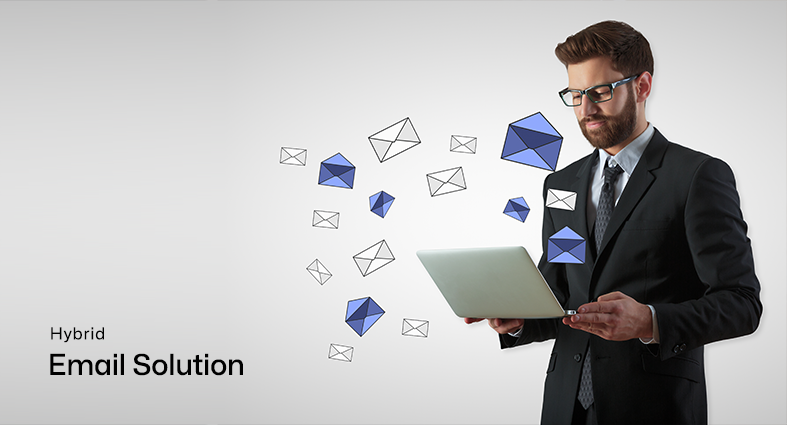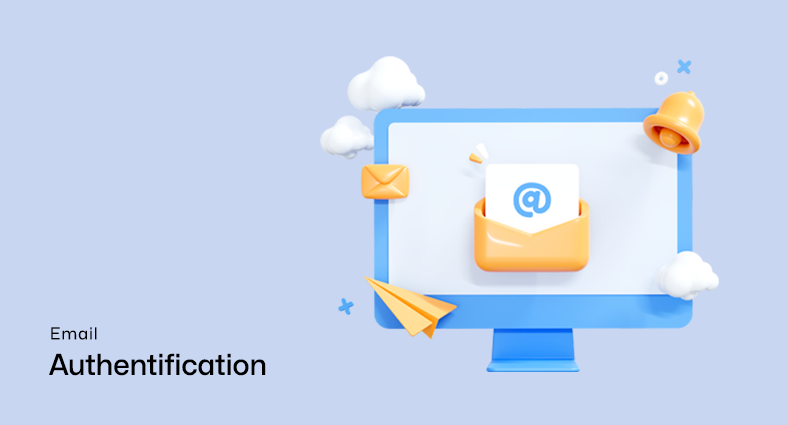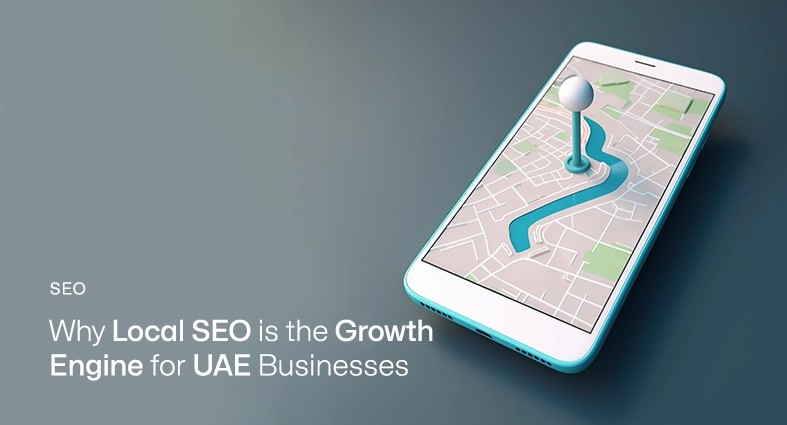Email marketing remains one of the most powerful and effective strategies for businesses to connect with their audience and drive results. In today’s digital landscape, where social media platforms and other communication channels compete for attention, email still holds a special place in engaging customers and driving conversions. This article dives into the world of email marketing strategies, exploring the various components that can unlock its full potential and maximize its impact. From understanding the importance of email marketing to crafting effective strategies, automating campaigns, measuring success, ensuring deliverability, and building customer relationships, we will delve into the key elements that can help businesses harness the true power of email marketing. Get ready to unleash the full potential of your email marketing campaigns and witness the inbox impact they can create.
Why Email Marketing Matters
Email marketing has proven to be a powerful tool in the world of digital marketing. With its ability to directly reach individuals’ inboxes, it offers a unique and personal way to engage with your audience. Let’s explore why email marketing matters and the remarkable benefits it can bring to your business. Email marketing matters because it allows you to connect with your target audience on a more personal level. Unlike social media or other marketing channels, email provides a direct line of communication that is not dependent on algorithms or platform changes. When someone willingly shares their email address with you, it signifies their interest in your brand or offerings. This permission-based marketing creates a unique opportunity to build trust, nurture relationships, and drive conversions.
Benefits of Email Marketing
- Increased Reach and Engagement: Email allows you to reach a wider audience and engage with them on a one-on-one basis. It provides a direct line of communication that is more personal and targeted than other channels.
- Cost-Effective: Email marketing is cost-effective compared to traditional marketing methods. It eliminates the need for print materials or postage fees and allows you to reach a large number of recipients at a fraction of the cost.
- Higher ROI: Email marketing consistently delivers a higher return on investment. With proper targeting and effective strategies, you can achieve impressive results in terms of conversions, sales, and customer retention.
- Personalization and Segmentation: Email marketing enables you to personalize your messages based on recipient data such as demographics, preferences, and purchase history. Segmenting your email list ensures that you deliver relevant content to specific groups, increasing engagement and conversions.
- Automation and Scalability: Email marketing tools offer automation features that allow you to set up automated campaigns, saving time and effort. You can create drip campaigns, welcome sequences, or abandoned cart reminders that run on autopilot, reaching the right people at the right time.
- Measurable Results: Email marketing provides detailed analytics and metrics to track the success of your campaigns. You can monitor open rates, click-through rates, conversions, and more, allowing you to optimize your strategies for better results.
Email Marketing Tools
- Mailchimp: Mailchimp is a widely-used email marketing platform that offers a user-friendly interface, automation features, and detailed analytics. It caters to businesses of all sizes and provides customizable templates and segmentation options.
- Constant Contact: Constant Contact offers a comprehensive suite of email marketing tools, including easy-to-use email builders, list management features, and automation capabilities. It also provides access to customizable templates and integrations with other marketing platforms.
- ConvertKit: ConvertKit is a popular choice for bloggers, content creators, and small businesses. It offers features specifically designed for creators, such as customizable opt-in forms, landing pages, and automated email sequences.
- HubSpot: HubSpot provides a full suite of marketing tools, including email marketing features. It offers robust automation capabilities, contact segmentation, and advanced personalization options. HubSpot’s CRM integration also allows for seamless lead management and tracking.
- AWeber: AWeber is known for its user-friendly interface and extensive email template library. It offers automation features, split testing, and list segmentation, making it suitable for businesses of all sizes.
Crafting Effective Email Marketing Strategies
Email marketing is only as effective as the strategies behind it. To truly harness its power, businesses must employ tactics that resonate with their audience, engage recipients, and drive desired actions. Crafting effective email marketing strategies involves understanding your audience, building a responsive email list, personalizing your emails, segmenting your audience, creating compelling content, focusing on design and visual appeal, and incorporating strong CTAs. By implementing these strategies, you can unlock the true power of email marketing and achieve exceptional results. Here are key components to consider when crafting effective email marketing strategies.
Understanding Your Audience
To create impactful email campaigns, it is essential to have a deep understanding of your target audience. Conduct thorough research to identify their needs, demographics, interests, pain points, preferences, and behavior. By gaining insights into their behaviors and needs, you can tailor your email content to resonate with them, increasing the chances of engagement and conversions.
Building a Responsive Email List
Building a responsive email list involves capturing the contact information of individuals who are genuinely interested in your brand or offerings. Focus on quality over quantity by attracting subscribers who are genuinely interested in your brand. Provide multiple opportunities for visitors to subscribe to your website, landing pages, and social media channels. Implement effective lead generation strategies such as opt-in forms on your website, landing pages, social media promotions, and gated content. This ensures that you have a list of engaged subscribers who are more likely to open your emails and take desired actions.
Email Personalization
Email personalization allows businesses to create tailored messages that resonate with recipients on a deeper level. By leveraging customer data and segmentation, businesses can customize their email content based on factors such as demographics, purchase history, browsing behavior, and engagement levels. This level of personalization helps build stronger connections with customers, increases engagement rates, and drives higher conversion rates. Personalized emails can include dynamic content, such as personalized product recommendations, customized offers, and targeted messaging based on specific customer interests. By taking the time to understand your audience and delivering relevant and personalized content, you can unlock the true power of email marketing and create a more meaningful and impactful experience for your subscribers.
Email Segmentation
Email segmentation involves categorizing your subscribers into specific groups based on their characteristics, demographics, past purchase behavior, engagement level, or preferences. By segmenting your audience, you can deliver targeted content that is relevant to each group’s specific interests or needs. This increases the effectiveness of your campaigns and ensures that recipients receive emails that resonate with their unique preferences, leading to higher engagement, click-through rates, and conversions.
Compelling Content Creation
The content of your emails is the driving force behind their success. Creating compelling, informative, and engaging email content is essential for capturing your audience’s attention and driving action. Use persuasive language, storytelling techniques, and a clear value proposition to convey the benefits of your products or services. Incorporate relevant visuals, such as images or videos, to enhance the visual appeal and make the content more engaging.
Design and Visual Appeal
The design and visual appeal of your emails plays a significant role in capturing and retaining the reader’s attention. Use professional and visually appealing templates that align with your brand identity. Pay attention to the layout, typography, colors, and overall aesthetics to create a visually pleasing experience. Ensure that your emails are mobile-responsive, as an increasing number of people access emails on their smartphones. Balance text and visuals to create a visually appealing layout that enhances readability and comprehension.
Call to Action (CTA)
A strong and compelling call-to-action (CTA) is essential for guiding recipients to take the desired action after reading your email. Clearly state what action you want them to take, such as making a purchase, signing up for a webinar, or downloading a resource. Use attention-grabbing and action-oriented language d make the CTA button prominent and easily clickable. Test different placements, wording, and colors to optimize the effectiveness of your CTAs. Place your CTA strategically within the email, ensuring it stands out and is easily clickable. A strong and well-placed CTA can significantly impact the conversion rates of your email campaigns.
Automating Email Campaigns for Efficiency
Email automation allows businesses to streamline their communication efforts, save time, and deliver timely and relevant messages to their subscribers. By leveraging email automation, businesses can set up a series of pre-defined emails that are triggered based on specific actions or events, ensuring that the right message reaches the right person at the right time. Let’s explore some key types of automated email campaigns that can enhance the efficiency and effectiveness of your email marketing strategy.
Email Automation
Email automation involves using software or tools to automate the sending of emails based on predefined triggers or conditions. This eliminates the need for manual intervention and ensures that subscribers receive relevant and timely messages without delay. Automation can be a game-changer for businesses, as it allows them to engage with their audience in a personalized and timely manner, even when managing a large subscriber base.
Welcome Emails
Welcome emails are the first impression you make on new subscribers, and they set the tone for your future communications. These automated emails are triggered when someone joins your email list, and they serve as a warm greeting, introducing your brand and thanking the subscriber for their interest. Welcome emails are an opportunity to make a positive impact, build trust, and provide valuable information or offers to new subscribers.
Drip Campaigns
Drip campaigns are a series of automated emails that are sent at predefined intervals or triggered by specific actions. These campaigns are designed to nurture leads, guide subscribers through a sales funnel, or deliver valuable content over time. Drip campaigns can be highly effective in building relationships with your audience, providing relevant information, and gently nudging them towards a desired action, such as making a purchase or signing up for a service.
Abandoned Cart Emails
These automated emails are triggered when a customer adds items to their cart but leaves the website without completing the purchase. Abandoned cart emails serve as a gentle reminder, urging customers to return to their cart and complete the transaction. By offering incentives, showcasing abandoned products, and addressing any concerns or hesitations, businesses can recover potentially lost sales and boost conversion rates.
Re-engagement Campaigns
Re-engagement campaigns are designed to reconnect with inactive subscribers and encourage them to re-engage with your brand. These automated emails are triggered when subscribers haven’t interacted with your emails or visited your website for a specific period. Re-engagement campaigns aim to reignite interest, remind subscribers of the value you offer, and entice them to take action. By providing exclusive offers, personalized recommendations, or inviting them to update their preferences, businesses can win back the attention and engagement of dormant subscribers.
Measuring Success and Analytics
Effective email marketing goes beyond simply sending out messages. It involves continuously monitoring and analyzing campaign performance to understand its effectiveness and make data-driven improvements. By measuring success and utilizing analytics, businesses can gain valuable insights into their email marketing efforts and optimize their strategies for better results.
Key Email Marketing Metrics
Key email marketing metrics provide crucial insights into the performance of your campaigns. These metrics allow you to assess the impact and engagement levels of your emails. Some of the essential email marketing metrics to track include:
- Open Rate: This metric indicates the percentage of recipients who opened your email. It gives you an idea of how compelling your subject lines and sender names are and whether your emails are grabbing the attention of your audience.
- Click-Through Rate (CTR): The CTR measures the percentage of recipients who clicked on a link within your email. It helps you understand the effectiveness of your email content and call-to-action (CTA). A higher CTR signifies that your emails are engaging and successfully driving recipients to take action.
- Conversion Rate: The conversion rate represents the percentage of recipients who completed a desired action, such as making a purchase or filling out a form, as a result of your email. It directly measures the effectiveness of your email in driving desired outcomes and indicates the overall success of your email campaigns.
- Bounce Rate: The bounce rate measures the percentage of emails that were not successfully delivered to recipients’ inboxes. Bounces can be categorized as either hard bounces (permanent delivery failures) or soft bounces (temporary delivery failures). Monitoring the bounce rate helps you maintain a clean email list and improve deliverability.
- Unsubscribe Rate: This metric indicates the percentage of recipients who opted out of receiving further emails from your list. It provides insights into the relevancy and quality of your content. A high unsubscribe rate may signal that your emails are not meeting recipients’ expectations.
A/B Testing
A/B testing, also known as split testing, is a valuable technique for optimizing your email marketing campaigns. It involves creating two versions of an email and sending them to different segments of your audience to compare their performance. By testing different elements such as subject lines, email content, CTAs, or visual elements, you can gather data on what resonates best with your audience.
A/B testing allows you to make informed decisions based on real data rather than assumptions. By identifying the winning variant, you can implement changes that improve open rates, click-through rates, and conversions. Continuous testing and iteration will help you refine your email marketing strategies over time and achieve better results.
Analyzing Campaign Performance
Analyzing campaign performance is crucial to understanding the effectiveness of your email marketing efforts. It involves tracking and evaluating various metrics, such as open rates, click-through rates, and conversions, to gauge the impact of your campaigns. Additionally, you can leverage email marketing analytics tools to gain insights into user behavior, engagement patterns, and the overall success of your campaigns.
Analyzing campaign performance allows you to identify trends, spot areas for improvement, and make data-driven decisions. By assessing the success of different email campaigns, you can refine your strategies, target specific segments more effectively, and create more engaging content.
Email Deliverability
When it comes to email marketing, delivering your messages to the intended recipients’ inboxes is paramount. Email deliverability refers to the ability of an email to successfully reach the inbox rather than being filtered out as spam or bouncing back. Poor deliverability can significantly hinder the effectiveness of your email marketing campaigns, as your carefully crafted messages may go unnoticed or be marked as spam.
Best Practices for Email Deliverability
To ensure optimal email deliverability, it’s essential to follow best practices that enhance the chances of your emails reaching the inbox.
- Maintain a Clean Email List: Regularly clean your email list by removing inactive or unsubscribed subscribers. Keeping your list updated helps improve deliverability rates and reduces the risk of spam complaints.
- Obtain Permission: Always obtain explicit permission from recipients before sending them marketing emails. Using double opt-in methods ensures that subscribers actively confirm their desire to receive emails, minimizing the chances of being marked as spam.
- Authenticate Your Emails: Implement email authentication protocols such as Sender Policy Framework (SPF), DomainKeys Identified Mail (DKIM), and Domain-based Message Authentication, Reporting, and Conformance (DMARC). These protocols verify the authenticity and integrity of your emails, enhancing deliverability and building trust with Internet Service Providers (ISPs).
- Use a Reliable Email Service Provider (ESP): Select a reputable ESP that has a good track record in email deliverability. A reliable ESP will have established relationships with ISPs, which can positively influence your email delivery rates.
- Avoid Spam Triggers: Craft your email content carefully to avoid common spam triggers. These triggers include using excessive capitalization, misleading subject lines, spammy keywords, or excessive use of exclamation marks. Comply with spam regulations such as the CAN-SPAM Act or the General Data Protection Regulation (GDPR) to ensure compliance and maintain a good sender reputation.
- Monitor and Analyze Email Performance: Regularly monitor key email performance metrics, such as bounce rates, spam complaints, open rates, and click-through rates. Analyzing this data allows you to identify potential deliverability issues and make necessary adjustments to improve future campaigns.
- Test and Optimize: Conduct A/B testing to experiment with different elements of your emails, such as subject lines, sender names, or content variations. This helps identify the most effective strategies for engaging your audience and improving deliverability.
- Provide Clear Unsubscribe Options: Make it easy for recipients to unsubscribe from their emails. Including a visible and accessible unsubscribe link helps prevent recipients from marking your emails as spam out of frustration.
Building Customer Relationships through Email Marketing
In today’s competitive business landscape, building strong and lasting customer relationships is crucial for sustainable growth. Email marketing provides an excellent platform to nurture leads, engage with customers, and foster long-term loyalty. By focusing on nurturing leads, engaging with customers, leveraging email newsletters, analyzing campaign performance, and staying informed about the latest trends, businesses can strengthen their customer relationships and drive long-term success through email marketing. Let’s explore the key aspects of building customer relationships through email marketing.
Nurturing Leads
Nurturing leads is an essential step in the customer journey. Email marketing allows businesses to stay connected with potential customers who have shown interest in their products or services. Through a series of strategically crafted emails, businesses can provide valuable information, address pain points, and guide leads through the sales funnel. By delivering targeted content that aligns with the lead’s needs and interests, businesses can build trust, establish credibility, and increase the chances of conversion.
Customer Engagement and Retention
Engaging with existing customers is just as important as acquiring new ones. Email marketing offers a direct line of communication to engage with customers, deliver personalized offers, and foster brand loyalty. By sending relevant and timely content, such as exclusive discounts, product updates, or relevant industry news, businesses can keep customers engaged and remind them of the value their brand provides. Strong customer engagement contributes to increased customer retention rates, repeat purchases, and positive word-of-mouth referrals.
Email Newsletters
Email newsletters are a popular and effective way to connect with subscribers regularly. These newsletters provide a curated mix of valuable content, such as blog articles, industry insights, company updates, or product recommendations. They serve as a way to keep subscribers informed, educated, and engaged with the brand. Well-designed newsletters with compelling visuals and clear calls to action can drive traffic to the website, increase conversions, and enhance brand recognition.
Email Analytics
Measuring the effectiveness of email marketing campaigns is essential for optimizing strategies and achieving better results. Email analytics provide valuable insights into campaign performance, recipient behavior, and engagement metrics. Key email marketing metrics include open rates, click-through rates, conversion rates, bounce rates, and unsubscribe rates. By analyzing these metrics, businesses can identify areas for improvement, test different approaches, and refine their email marketing strategies for maximum impact.
Email Trends
The world of email marketing is constantly evolving, and staying updated with the latest trends is crucial for staying ahead of the competition. Some current email marketing trends include the rise of mobile optimization, interactive emails with engaging features like GIFs or videos, personalized and hyper-targeted messaging, and the use of automation and artificial intelligence to deliver highly relevant and timely content. By incorporating these trends into email marketing strategies, businesses can capture the attention of their audience and create memorable experiences.
Conclusion
It is essential to constantly analyze and optimize email marketing campaigns, leveraging email analytics to gain insights and make data-driven decisions. By staying informed about the latest email marketing trends and incorporating them into strategies, businesses can stay ahead of the competition and continue to deliver valuable content to their subscribers. Email marketing remains a powerful and effective strategy that can yield substantial results for businesses. By understanding the power of email marketing, implementing best practices, and continually refining strategies, businesses can unleash the full potential of email marketing and achieve remarkable inbox impact. Embrace the power of email marketing and unlock a world of opportunities for your business’s growth and success. Looking to take your business to new heights? Look no further than Pentagon’s cutting-edge digital marketing services. Our expert team is ready to boost your online presence, drive targeted traffic to your website, and skyrocket your conversions. Get in touch with Pentagon’s digital marketing experts now and witness the transformation firsthand.
services
TIPS AND NEED FOR EMAIL SECURITY
IMPORTANCE OF EMAIL AUTHENTICATION
Feel free to send us a message.
Please, share your thoughts, and let's chat over a cup of tea.




















